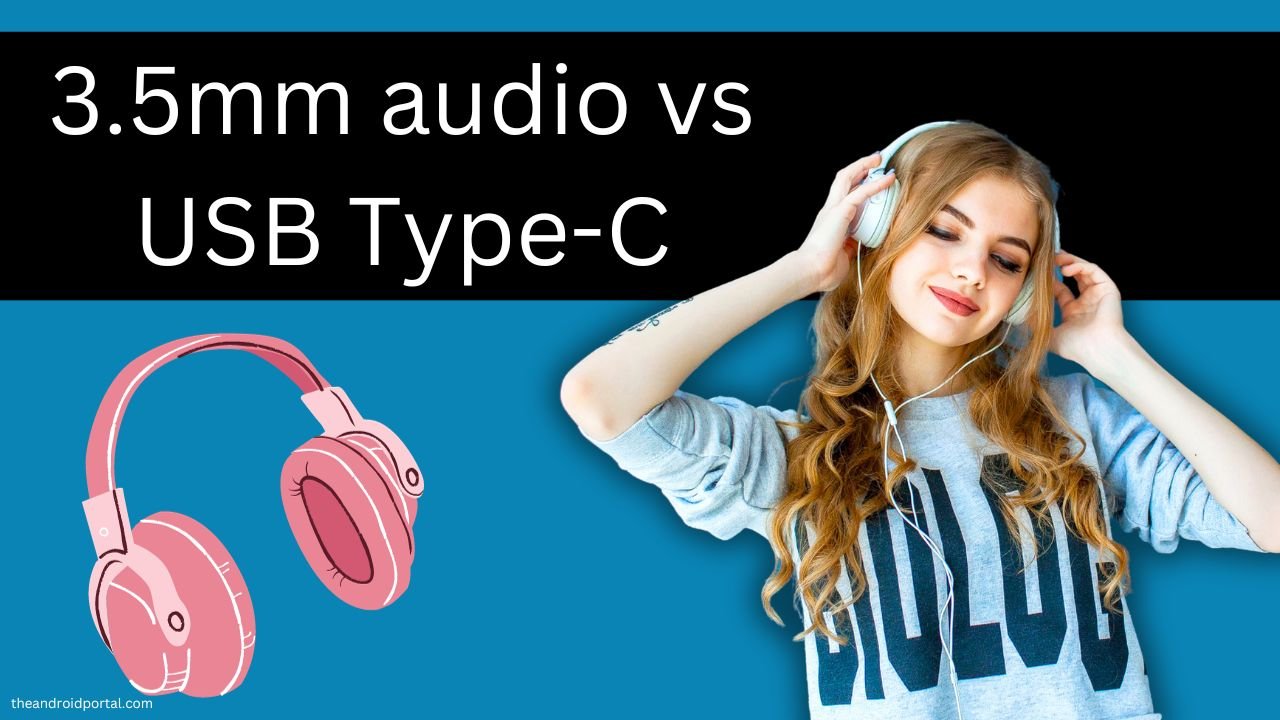In the red corner, we have the classic 3.5mm earphones, the tried-and-true warriors of the audio world. In the blue corner, the new kid on the block: USB-C earphones, boasting faster data transfer and a reversible design.

It’s a clash of titans, folks, and we’re here to dissect the pros and cons of each to see who truly reigns supreme in the audio arena.
3.5mm audio vs USB Type-C
| Feature | 3.5mm Audio | USB-C Audio |
| Universality | Widely supported by various devices | Gaining traction but not as universal |
| Durability | Highly durable, with fewer components | More prone to wear due to complex electronics |
| Charging Required | No | Sometimes, if active features are present |
| Sound Quality | Limited by device’s DAC | Often superior with built-in DAC and amp |
| Data Transfer Speed | N/A | Faster, supports more features |
| Reversible Design | No | Yes |
| Compatibility | Almost universal | It may require adapters for some devices |
| Cost | Generally cheaper | It can be more expensive |
| Smart Features | Limited | More likely to have smart features like noise cancellation |
| Future Outlook | Stable but limited innovation | Rapidly evolving with new features |
The Legacy of 3.5mm Earphones
Universality
The 3.5mm jack is ubiquitous. This connection is nearly universal, from smartphones to laptops to in-flight entertainment systems.
Durability
Built like tanks, these earphones have fewer components, minimizing potential issues.
No Charging Required
Just plug and play. Battery life is never a concern with these earphones.
The Downside
The device’s internal DAC can compromise sound quality.
The Rise of USB-C Earphones
Sound Quality
These earphones often come with their own DAC and amplifier, providing potentially superior audio.
Fast Charging and Data Transfer
USB-C offers quick charging and supports additional features like noise cancellation.
Reversible Design
No more fumbling to plug in your earphones; USB-C is reversible.
The Downside
These earphones can suffer from issues like slow charging and incompatibility due to their complex electronics.
Recommendations for Different Users and Use Cases
For the Audiophile
USB-C earphones, with their built-in DAC and amplifier, are ideal for those who crave nuanced sound quality.
For the Everyday Commuter
3.5mm earphones are reliable and don’t require charging, making them perfect for daily commuting.
For the Fitness Enthusiast
The durability of 3.5mm earphones makes them less susceptible to moisture-related issues.
For the Tech-Savvy
USB-C earphones often have smart features like touch controls and active noise cancellation.
For the Frequent Flyer
Most in-flight entertainment systems still use a 3.5mm connection, making these earphones the go-to choice for travellers.
For the Multi-Device User
USB-C earphones offer a seamless experience for those who frequently switch between devices.
For the Budget-Conscious
3.5mm earphones are generally more affordable and offer good value.
A Look at the Future of USB-C and 3.5mm Earphones
The Future of USB-C Earphones
As USB-C becomes the standard port for new devices, we can expect a broader range of options and smarter features like AI-driven noise cancellation.
The Future of 3.5mm Earphones
While they may lose ground in the mainstream market, 3.5mm earphones will find a niche among those who value reliability and simplicity.
The Final Note
Both USB-C and 3.5mm earphones have their merits and drawbacks. Your ideal pick depends on your priorities: cutting-edge features or tried-and-true reliability. Choose wisely, audio aficionados!













